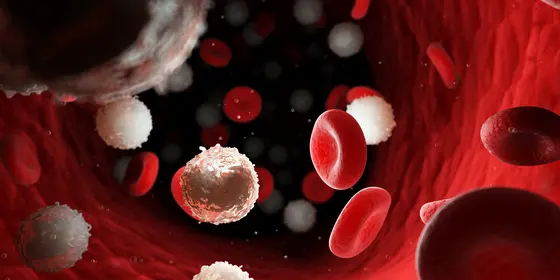Messenger RNA molecules (mRNAs), the transcripts of genes, serve as the blueprint for the construction of proteins. In all higher organisms, the cell attaches a long chain of adenine nucleotides, the so-called poly(A) tail, to the rear end of the transcripts in a process known as polyadenylation. The length and position of the chain varies from organism to organism and serves to stabilize the RNA molecule.
Different signaling motifs show the participating enzymes the site where the poly(A) chain is to be attached to the transcript. This does not always happen at the same site of the mRNA. The differential use of these sites is known as “alternative polyadenylation“. This mechanism affects the length of the so-called 3'-untranslated end of the mRNA, a region that contains information beyond the protein sequence. This 3'-untranslated region is particularly important for stability, localisation and the efficiency with which the transcripts are translated into proteins. “Only recently it has been known that some cell types use this mechanism to control how much protein is produced per transcript and which isoform is to be expressed,“ says Pia Sommerkamp, the lead author of the study conducted by DKFZ and HI-STEM.
By applying a novel sequencing method, the scientists were able to identify numerous genes that are essential for stem cell development and are regulated via alternative polyadenylation during differentiation or in response to inflammation. These include the central metabolic enzyme glutaminase, which can be produced in two differently active isoforms. As the researchers found out, the activation of blood stem cells leads to a change from the less active to the highly active glutaminase isoform. This switch is coordinated by alternative polyadenylation.
“Only this isoform switch enables the stem cells to adapt all the necessary metabolic pathways according to their needs. This includes rapid increases in activity that are necessary in the case of infections or inflammations,“ explains Nina Cabezas-Wallscheid, who was co-supervisor of the study at the MPI in Freiburg. “With alternative polyadenylation, we have now discovered another control level with which stem cells regulate vital processes. We now want to investigate in more detail whether cancer stem cells also use this mechanism for their own purposes in leukaemias. We hope that this will provide us with new approaches for fighting the disease,“ explains Andreas Trumpp, Director of HI-STEM gGmbH at DKFZ and senior author of the study.
*The Heidelberg Institute for Stem Cell Technology and Experimental Medicine (HI-STEM gGmbH) is a partnership between the DKFZ and the Dietmar Hopp Foundation
Pia Sommerkamp, Sandro Altamura, Simon Renders, Andreas Narr, Luisa Ladel, Petra Zeisberger, Paula Leonie Eiben, Malak Fawaz, Michael A. Rieger, Nina Cabezas-Wallscheid und Andreas Trumpp: Differential alternative polyadenylation landscapes mediate hematopoietic stem cell activation and regulate glutamin metabolism.
CELL Stem Cell 2020, DOI: dx.doi.org/10.1016/j.stem.2020.03.003
